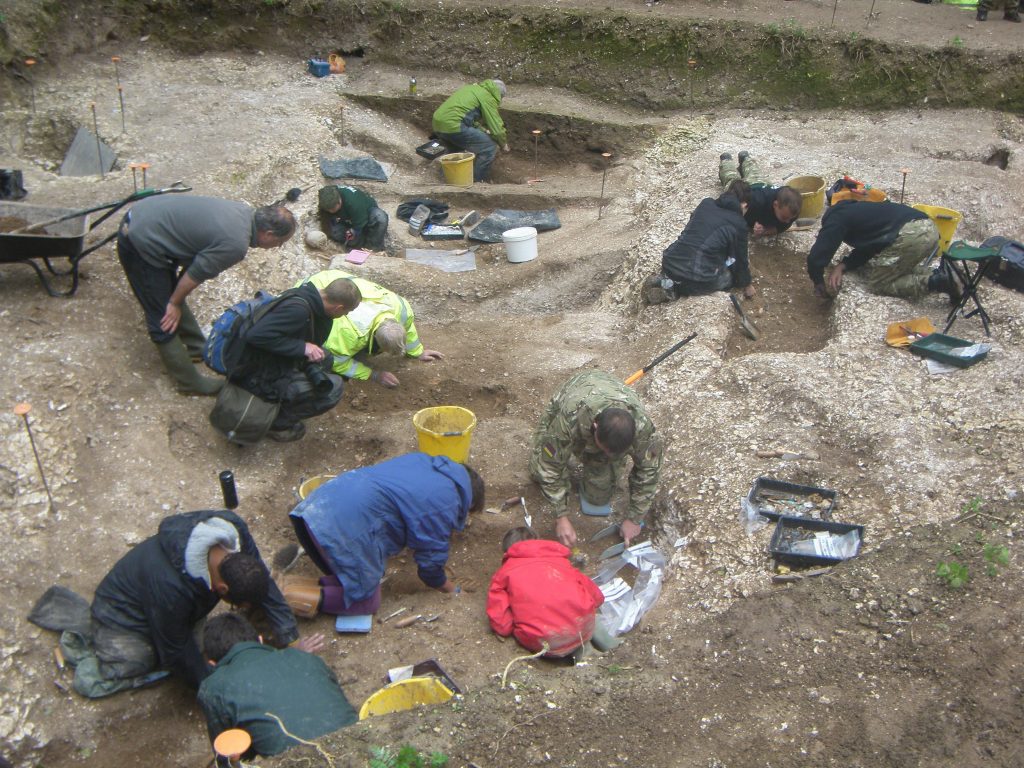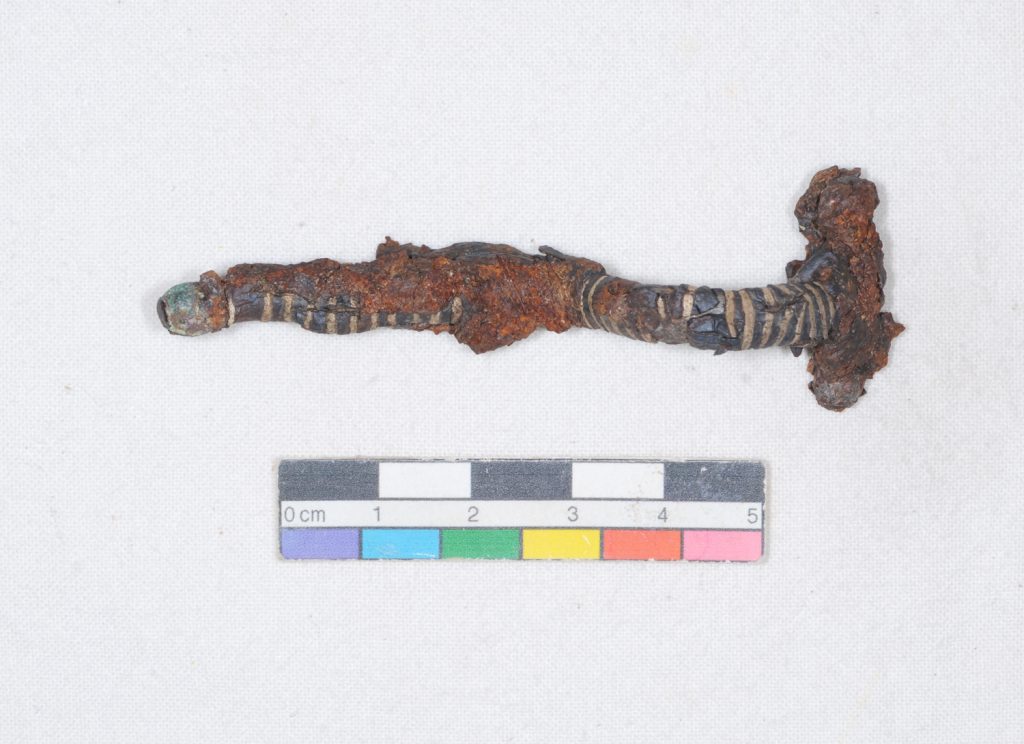
Barrow Clump is a protected scheduled monument and an Early Bronze Age burial mound that later became the burial place for Anglo Saxons in the 6th Century AD. Excavation of the site began in 2003 by Operation Nightingale to investigate the nature of damage from burrowing badgers.
Dubbed ‘Exercise Beowulf’, excavations were undertaken between 2003 to 2004, 2012 to 2014 and 2017 to 2019.
Volunteers from Operation Nightingale were essential to the project. Operation Nightingale is a programme that uses archaeology to aid in the recovery of soldiers who are sick, wounded or were injured on operations. Trained staff and volunteers worked with us to excavate the site over the years and their role in the project has been instrumental in its success.
Barrow Clump has been the site of many significant finds over the course of our excavations. In November 2017, volunteers discovered remains outside the barrow which showed that the cemetery was in fact fairly protected from the movement of heavy military and farm vehicles. At the edge of the track a man with an iron spear and a woman with jewellery were found.
Further digs unveiled some exciting discoveries including a female skeleton, a bucket with surviving yew staves, a fine great square-headed brooch and only the second Visigothic brooch of its type to be found in Britain, many spearheads with 6th Century shield bosses and a ‘warrior’ grave with a sword, spear, pin, belt and knife.

These are phenomenal results and this led to the idea that we should publish our findings in a monograph. The outcome is the publication of, 'A Prehistoric Burial Mound and Anglo-Saxon Cemetery at Barrow Clump, Salisbury Plain, Wiltshire.' The book includes all the findings from the prehistoric and 6th Century burials and finds right up to artefacts from the 20th Century.
The book will be launched at a celebratory event at the Wiltshire Museum in Devizes along with Historic England and Wessex Archaeology. The museum will also house all the finds from the excavation. The data found on this excavation is being used for the careful management of heritage on Salisbury Plain.
This volume is also special in that it is the 40th Monograph produced by Wessex Archaeology (in their 40th year). Several parts of the book were written by the military veterans themselves, personnel who had experienced the joy of archaeology as part of their recovery journey.
DIO plays a vital role in preserving, protecting and maintaining monuments and sites of historical and scientific interest across the MOD estate and we take great pride in this work. We also couldn’t have done it without our partners from Historic England, Wessex Archaeology and Operation Nightingale. It has been a fantastic project to work on one that we hope will be shared with generations to come.